Emphasis on Technology (Water Scrubber, Chemical Scrubber, Pressure Swing Adsorption (PSA), Membrane, and Others), Application (Municipal and Domestic Sewage, Industrial Waste, Landfill Gas, and Agriculture Waste), and Region/Country.
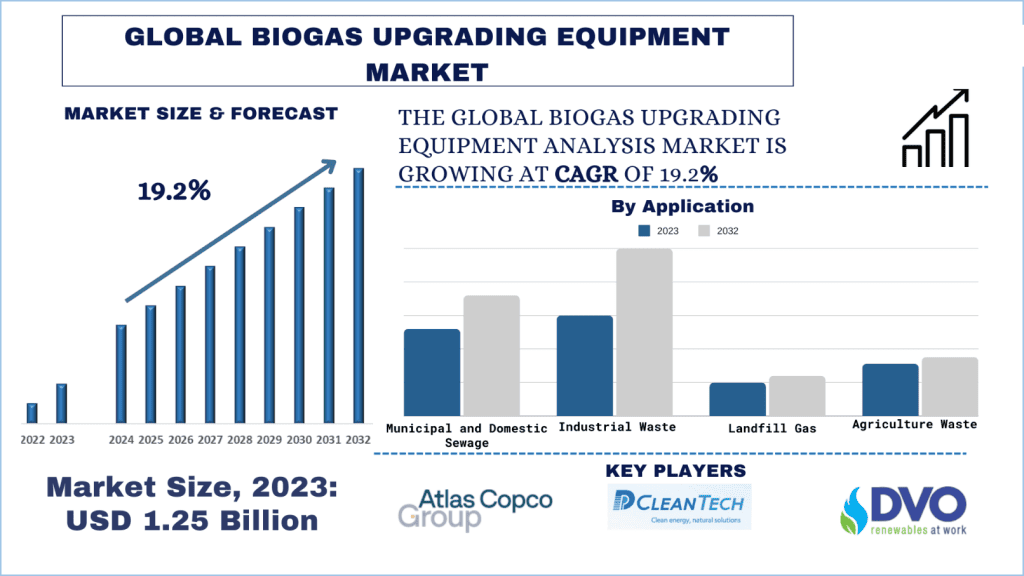
The biogas upgrading equipment market was valued at USD 1.25 Billion in 2023 and is expected to grow at a robust CAGR of around 19.2% during the forecast period (2024-2032).
Amidst the global shift towards sustainable energy, the biogas upgrading equipment market stands at the forefront of driving this vital change. Around the world, governments are spearheading ambitious initiatives to curb greenhouse gas emissions and bolster energy security, resulting in a remarkable upsurge in the need for cutting-edge technologies capable of harnessing the potential of renewable energy sources such as biogas. A primary catalyst propelling the expansion of the biogas upgrading equipment market is the growing focus on reducing greenhouse gas emissions and advancing sustainable energy sources. Governments have rolled out various incentives and policies to promote the adoption of renewable energy technologies, including biogas. This has ignited a significant demand for upgrading state-of-the-art biogas equipment to efficiently transform raw biogas into premium-quality, grid-ready renewable natural gas (RNG) or biomethane. This marks an exciting and pivotal moment in the sustainable energy landscape.
The biogas upgrading equipment market is poised for continued growth, driven by the global commitment to sustainable energy and the increasing viability of biogas as a renewable fuel source. As the industry evolves, key trends and developments are shaping the future landscape:
Technological Advancements: Ongoing research and development in biogas upgrading technologies will continue to improve efficiency, reduce costs, and enhance the overall performance of these systems, making them more accessible and appealing to a broader range of industries and communities.
Sustainability and the Circular Economy: The alignment of biogas upgrading with the principles of the circular economy will drive further investments and innovations as the industry seeks to maximize the utilization of organic waste and contribute to a more sustainable future.
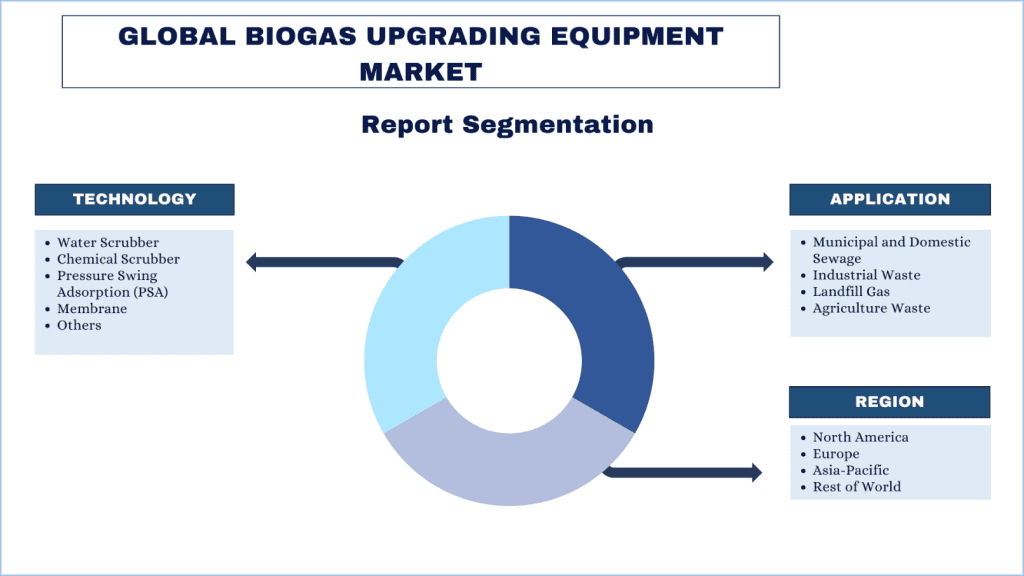
Asia Pacific is expected to Grow with a Significant CAGR During the Forecast Period.
The Asia Pacific region is witnessing significant investments in biogas infrastructure, including developing new biogas plants and upgrading existing facilities. This growth is driven by the increasing demand for biogas as a fuel for transportation, heat, and electricity generation. For instance, China has set a target of producing 30 billion cubic meters of biogas by 2025, which is expected to drive the growth of the biogas upgrading technology market. Similarly, India has launched initiatives to promote biogas as a fuel for transportation, which is expected to drive the growth of the biogas upgrading technology market.
The biogas upgrading equipment market is competitive and fragmented, with several global and international players. The key players are adopting different growth strategies to enhance their market presence, such as partnerships, agreements, collaborations, new product launches, geographical expansions, and mergers and acquisitions. Some of the major players operating in the market are Atlas Copco AB, Air Liquide SA, Carbotech Gas Systems GmbH, DP CleanTech Co. Ltd., DVO, Inc., Greenlane Renewables Inc., HAASE Umwelttechnik GmbH, Nacelle Logistics LLC, NEOZEO AB & SIA, and Pentair Plc.
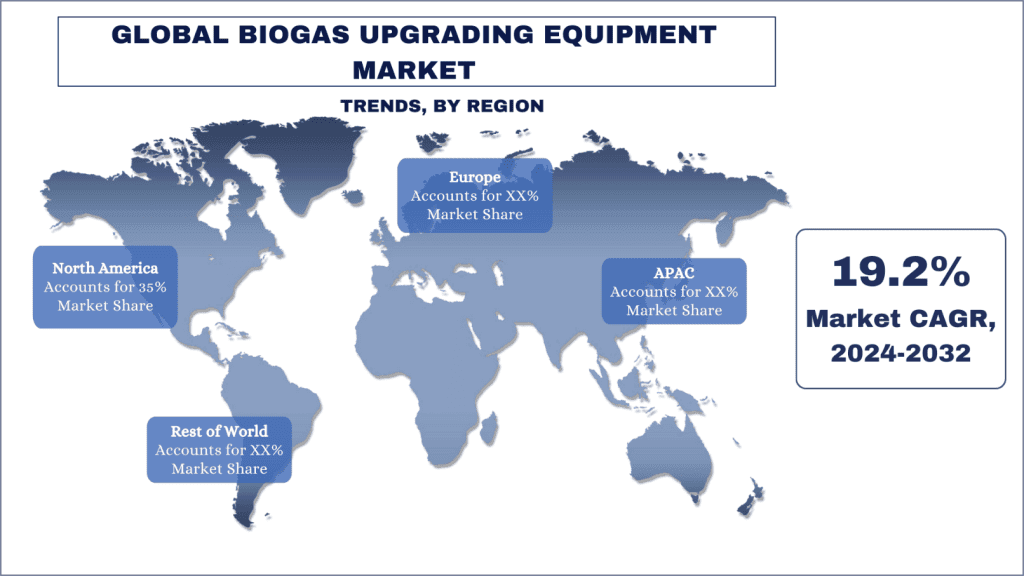
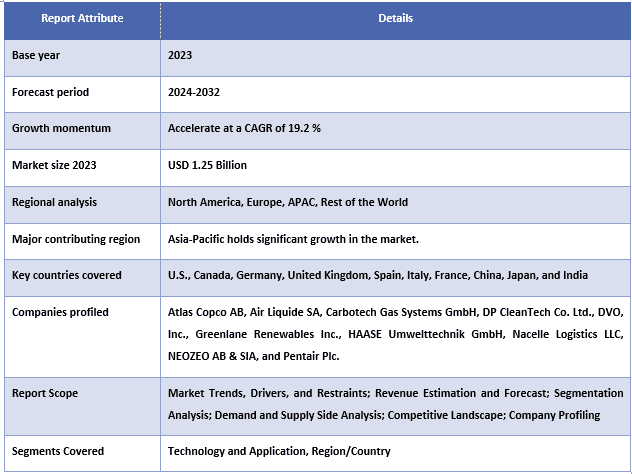
The global biogas upgrading equipment market can further be customized as per the requirement or any other market segment. Besides this, UMI understands that you may have your own business needs, hence feel free to connect with us to get a report that completely suits your requirements.
1. Market Introduction
2. Research Methodology Or Assumption
3. Executive Summary
4. Market Dynamics
5. Pricing Analysis
6. Biogas Upgrading Equipment Market Revenue (usd Bn), 2022-2032f.
7. Market Insights By Technology
8. Market Insights By Application
9. Market Insights By Region
10. Value Chain Analysis
11. Competitive Landscape
12. Company Profiled
13. Acronyms & Assumption
14. Annexure
Analyzing the historical market, estimating the current market, and forecasting the future market of the global biogas upgrading equipment market were the three major steps undertaken to create and analyze the adoption of biogas upgrading equipment in major regions globally. Exhaustive secondary research was conducted to collect the historical market numbers and estimate the current market size. Secondly, to validate these insights, numerous findings and assumptions were taken into consideration. Moreover, exhaustive primary interviews were also conducted, with industry experts across the value chain of the global biogas upgrading equipment market. Post assumption and validation of market numbers through primary interviews, we employed a top-down/bottom-up approach to forecasting the complete market size. Thereafter, market breakdown and data triangulation methods were adopted to estimate and analyze the market size of segments and sub-segments of the industry. Detailed methodology is explained below:
Step 1: In-Depth Study of Secondary Sources:
A detailed secondary study was conducted to obtain the historical market size of the biogas upgrading equipment market through company internal sources such as annual reports and financial statements, performance presentations, press releases, etc., and external sources including journals, news and articles, government publications, competitor publications, sector reports, third-party databases, and other credible publications.
Step 2: Market Segmentation:
After obtaining the historical market size of the biogas upgrading equipment market, we conducted a detailed secondary analysis to gather historical market insights and share for different segments & sub-segments for major regions. Major segments are included in the report as technology and application. Further country-level analyses were conducted to evaluate the overall adoption of biogas upgrading equipment in that region.
Step 3: Factor Analysis:
After acquiring the historical market size of different segments and sub-segments, we conducted a detailed factor analysis to estimate the current market size of the biogas upgrading equipment market. Further, we conducted factor analysis using dependent and independent variables such as technology and application of the biogas upgrading equipment market. A thorough analysis was conducted for demand and supply-side scenarios considering top partnerships, mergers and acquisitions, business expansion, and product launches in the global biogas upgrading equipment market sector.
Current Market Size Estimate & Forecast
Current Market Sizing: Based on actionable insights from the above 3 steps, we arrived at the current market size, key players in the global biogas upgrading equipment market, and market shares of the segments. All the required percentage shares split, and market breakdowns were determined using the above-mentioned secondary approach and verified through primary interviews.
Estimation & Forecasting: For market estimation and forecast, weights were assigned to different factors, including drivers & trends, restraints, and opportunities available for the stakeholders. After analyzing these factors, relevant forecasting techniques, i.e., the top-down/bottom-up approach, were applied to arrive at the market forecast for 2032 for different segments and sub-segments across the major global markets. The research methodology adopted to estimate the market size encompasses:
Market Size and Share Validation
Primary Research: In-depth interviews were conducted with the Key Opinion Leaders (KOLs) including Top Level Executives (CXO/VPs, Sales Head, Marketing Head, Operational Head, Regional Head, Country Head, etc.) across significant regions. Primary research findings were then summarized, and statistical analysis was performed to prove the stated hypothesis. Primary research input was consolidated with secondary findings, hence turning information into actionable insights.
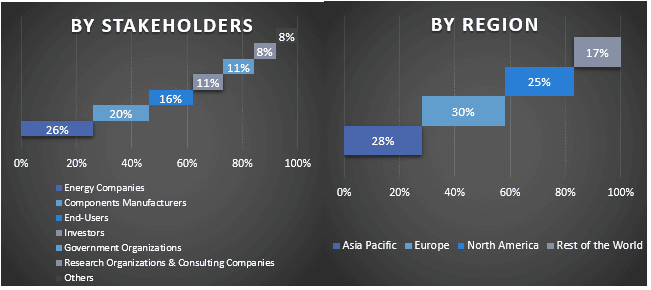
Market Engineering
The data triangulation technique was employed to complete the overall market estimation and to arrive at precise statistical numbers for each segment and sub-segment of the global biogas upgrading equipment market. The data was split into several segments and sub-segments after studying various parameters and trends in the technology and application areas of the global biogas upgrading equipment market.
The current & future market trends of the global biogas upgrading equipment market were pinpointed in the study. Investors can gain strategic insights to base their discretion for investments on the qualitative and quantitative analysis performed in the study. Current and future market trends determined the market’s overall attractiveness at a regional level, providing a platform for the industrial participant to exploit the untapped market to benefit from a first-mover advantage. Other quantitative goals of the studies include:
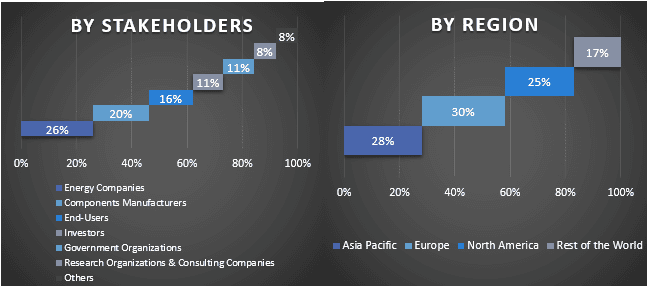
Q1: What is the biogas upgrading equipment market's current market size and growth potential?
Q2: What are the driving factors for the growth of the biogas upgrading equipment market?
Q3: Which segment has the largest biogas upgrading equipment market share by technology?
Q4: What are the emerging technologies and trends in the biogas upgrading equipment market?
Customers who bought this item also bought